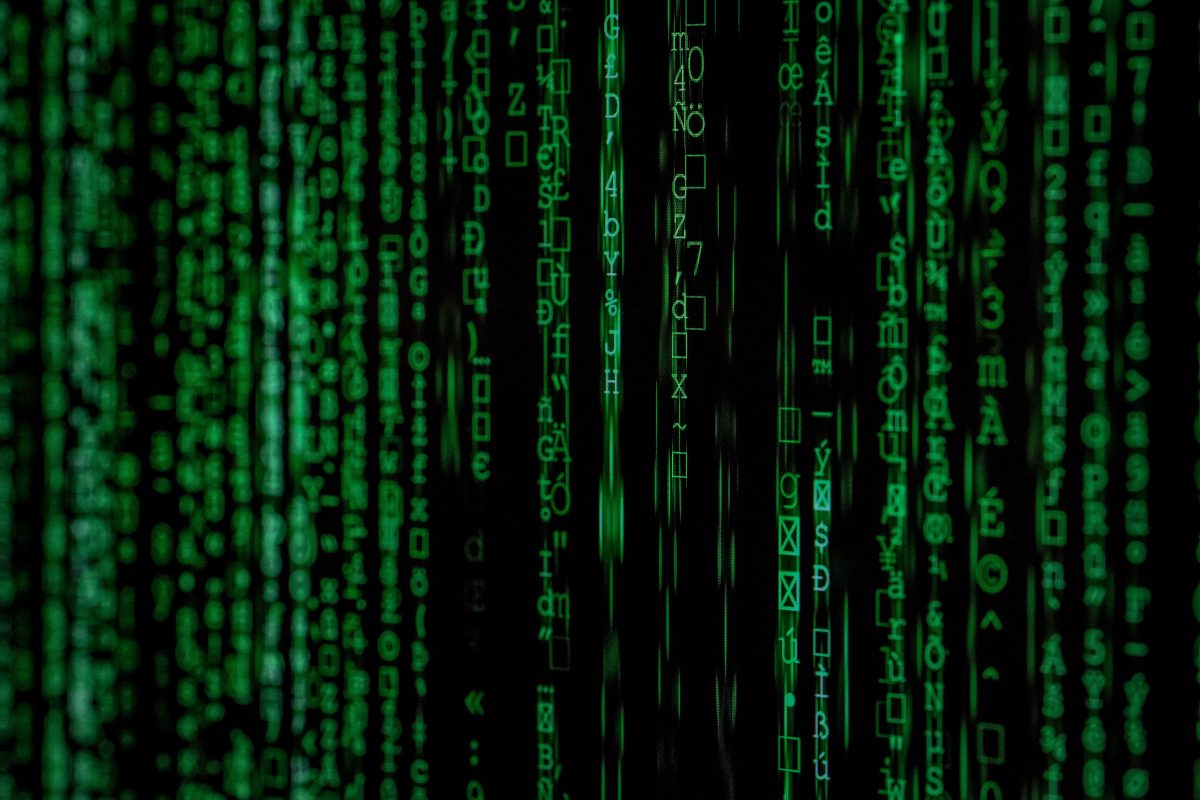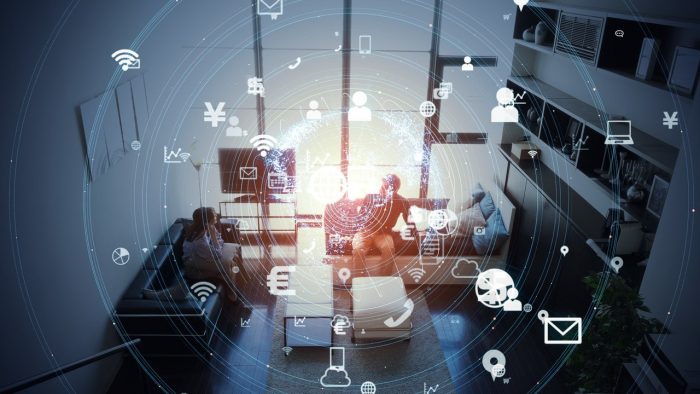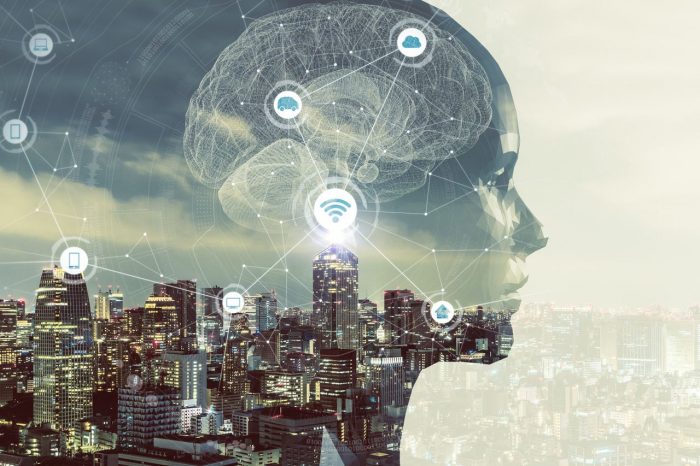
I head to the parking lot and realize that, with the rise in the number of self-driving cars, it’s been some time since driver’s ed courses have disappeared. Getting your driver’s license has become a thing of the past, more of a hobby for romantics than a real necessity. Driver’s ed schools have become training centers that, in just one day, teach you to get the most out of the latest features of smart cars, such as entertainment, route and vacation planning, and video calls.
My self-driving car is pulling up. The car picked up on the fact that I want to go home through a small, cerebral communications implant that’s under the skin of my skull. I also have different subcutaneous sensors that monitor my health, factors like blood pressure, any bacteria present, and oxygen levels.
https://giphy.com/gifs/tesla-autopilot-bD88YM5YNSte8
I get in the car; interacting with it is almost human in terms of the voice, emotion, and experience. The car has learned my taste in music and my temperature and lighting preferences, which are adjusted without pushing any buttons.
Thought-controlled technology is still pretty new, but it’s already set up in my vehicle. It’s the same technology that war veterans use to move their prosthetic limbs remotely. In this world, with just a thought you can control your environment, just as neurotechnology helps a paralyzed patient communicate with the world around them through neural activity.

And when I get home, these same neurotechnologies let me “talk” to the electronic architecture in my house without saying a word. Remote controls disappeared a while ago, and home appliances also operate through thought.
At the same time, the world of nanotechnology is transforming our lives in unimaginable ways. There is artificial skin, powdered solar cells, self-healing body parts, invisibility cloaks, and a large number of medical applications at the DNA level that will be able to create and rebuild parts of the human body and the environment. For example, 3D printers are already printing synthetic DNA so we can repair ourselves from the inside out and regenerate body parts, like a self-replacing tooth.
I look in the fridge to find strawberries that are still tart. My doctor, who specializes in big data and information analysis collected by my implants and sensors, has informed me that I need to stabilize my pH level, lower my cholesterol, and watch out for any intolerances. To do so, he didn’t prescribe me any medications, just a set of apps that have become the new preventative medicine.
Next to the microwave is a new machine that prints 3D food with hundreds of cartridges of different ingredients that I use to print food quickly with the exact number of calories and nutrients I need.
I go over to the piano, put on my tactile gloves that are covered with sensors and actuators that can generate electrical impulses that move the muscles in my hands, and get ready for a music lesson. My teacher is an avatar of a famous deceased pianist who gives me a master class by making my fingers move to learn to play the piano properly.
Before I go to sleep, I flip through the newspaper and read that the most in-demand field of study this year among students is philosophy. Our whole way of life has been turned upside down by machines, computers that have greater computational abilities than our brains, and big data is done automatically through artificial intelligence (AI) on those machines. Everything is possible, everything is feasible, the important thing isn’t what we can do but why and for what purpose, the philosophy, the ethics, making things sustainable, understanding how our actions and those of the machines affect our present and future, those of others and of everything around us, and we’re once again seeking new meanings of life. The humanities and our Human Intelligence (unlike Artificial Intelligence) are once again protagonists, and through them and a higher level of consciousness, we’re going back to what makes us unique as humans and better complementing the machines.
Is the future already here?
This is just one sketch of what the future has in store for us. A future that accelerates exponentially due to big technological advances, the world of data and algorithms, and AI that will change the world as we now know it. There are plenty of challenges and opportunities in store. There are a billion people who want to have electricity, millions who don’t have potable water, climate change is happening, manufacturing is inefficient, traffic is choking cities, education is a luxury for many, and dementia and degenerative diseases will affect almost all of us if we live long enough. Nevertheless, scientists and techies, entrepreneurs, and society’s best understanding, along with the huge AI revolution will enable us to find solutions to many of these problems, and I’m sure that we’ll manage it. Get ready for the new world that’s on the way.

The coming revolution, Artificial Intelligence
AI itself is still in a fledgling phase. Thanks to the advances made over the last few years, we’ve begun building systems that can perceive, learn, and reason, and on that foundation, they can make predictions or recommendations. Almost all fields of human activity could benefit from AI systems designed to complement human intelligence. From preventing diseases that were once fatal to allowing people with disabilities to participate more fully in society, to creating more sustainable ways to use the earth’s limited resources, AI promises a better future for all.
A change of this magnitude inevitably causes social problems. The age of data and informatics has forced us to face important questions about privacy, security, equity, inclusion, and the significance and value of human work. All of these questions will take on particular significance as AI systems become more useful and widespread.
This will require a focus on human beings And it will take a focus that is centered on taking advantage of the power of artificial intelligence in order to help people. The idea is not to replace people with machines, but to complement human capacities with AI’s incomparable ability to analyze large quantities of data and patterns that would otherwise be impossible to detect. Human Intelligence and Artificial Intelligence should join forces.

It’s impossible to predict how AI will change our lives and those of our children. Nevertheless, it is how this transition is managed that is critical. But it will surely help many people, both young and old, who have imaginative ideas for how to use artificial intelligence to take on social challenges. A focus centered on human beings can only happen if researchers, policy makers and heads of government, businesses, and civil society join together to develop a shared ethical framework for artificial intelligence.
This, in turn, will help foster responsible development of artificial intelligence systems that will inspire confidence in setting up the foundations of AI focused on human beings that everyone can trust. Building the future that is to come is in our hands.





There are no comments yet